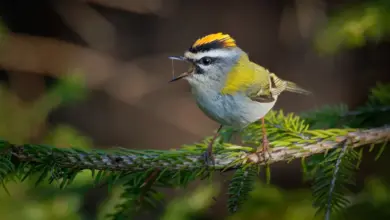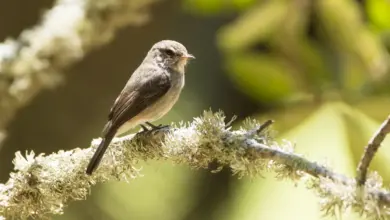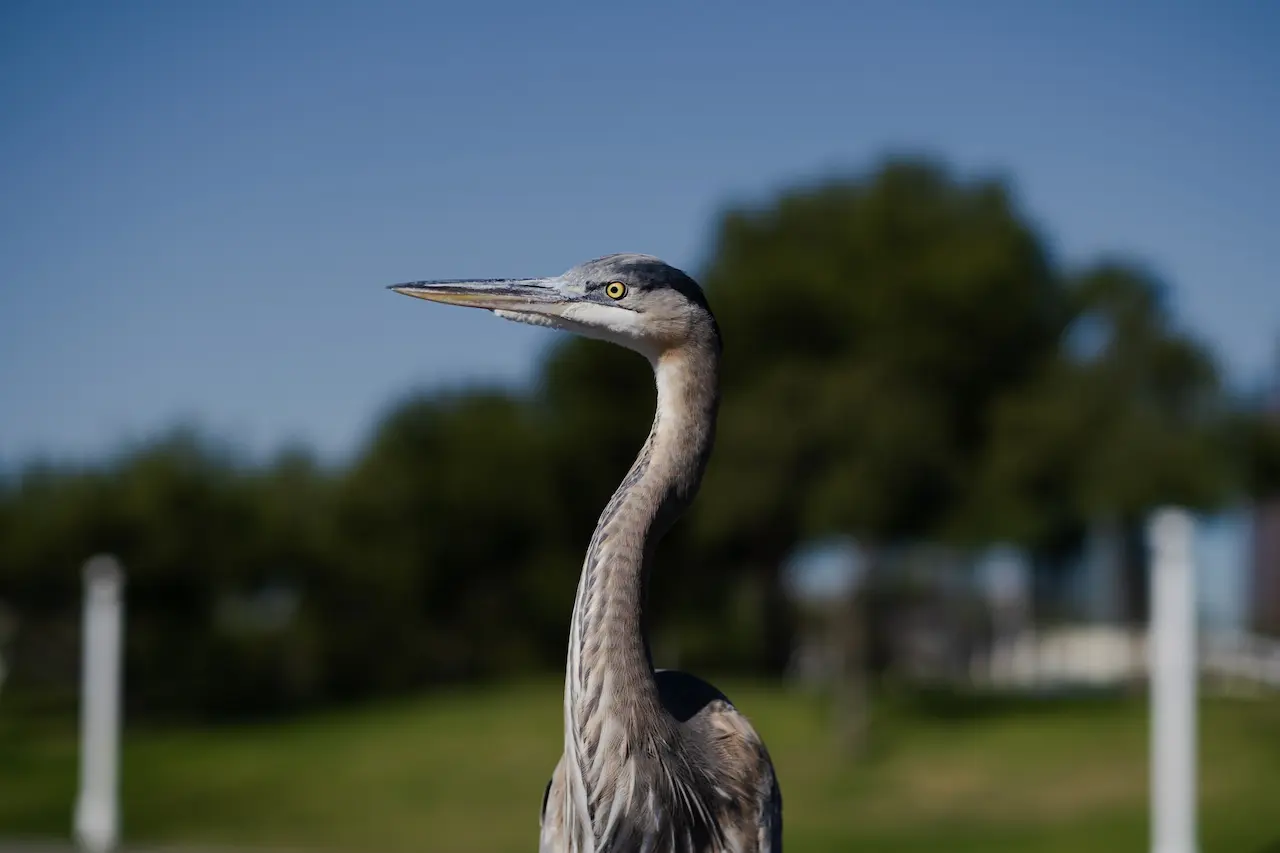Where Do Birds Go to Die? Why Do You Never See Dead Birds?
Have you ever wondered why you don’t encounter too many dead birds? Where do birds go to die, and why can’t we see them around us?
A New York Times article from 2011 claimed that 5 billion birds die in the US every year.
That’s about 9000 birds a minute.
So where do all these birds go when they die? How come you do not see any of them around you?
Sure, there’s the occasional roadkill you might have seen on your drive to the office. But that does not explain the staggeringly large number that the figure demonstrates.
So why aren’t you knee-deep in bird carcasses right now?
The answer isn’t as exotic as you might think. It is rather mundane. Nature has its own way of disposing of its dead, no matter how gruesome it may appear to us.
In this article, I will attempt to give you all the details you need to understand where dead birds disappear when their life is over.
Let’s start at the beginning – how birds die.
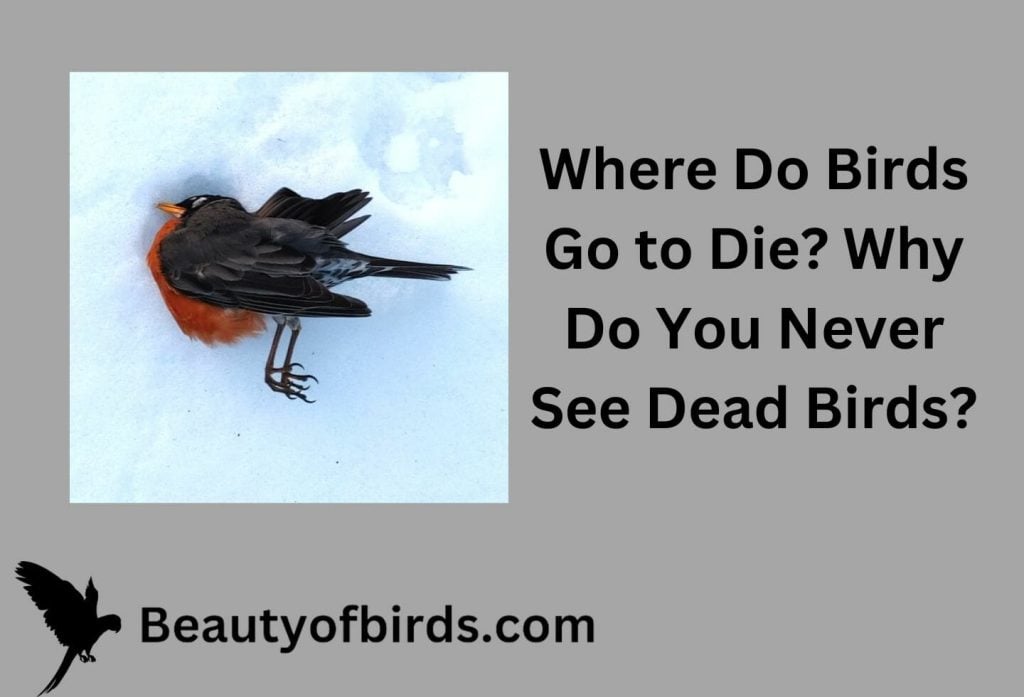
How Do Birds Die?
Did you know that the number one reason behind bird mortality is windows?
As unbelievable as it may sound, there is research to back this claim.
Most birds don’t die a natural death, though we will discuss that in the next section.
For now, let’s look at some of the major causes of bird death due to accidental causes:
Collisions
There are several man-made obstacles in the path of birds that lead to their death. Some of the major ones include
| Type of Collisions | Estimated Deaths (birds/year) |
| Windows | 97-976 mn |
| Cellphone Towers | 50 mn |
| High Tension Wires | 174 mn |
| Electrocutions | 10k |
| Cars | 60 mn |
| Wind Turbines | 33k |
Window strikes are a major threat to birds. Birds often fly into windows because they see their natural habitat reflected in the glass.
Simple steps can be taken to reduce these collisions, such as using outside screens, tape, or strings on the outside of the glass or decorative features like stained glass designs or window dividers.
Anything that reduces or breaks up the window’s reflection can help prevent bird strikes.
Communication towers, particularly those used for cell phones and digital TV, have proliferated in recent years and pose a significant threat to birds.
Collisions often occur because birds are attracted to lighted towers in the evening and nighttime.
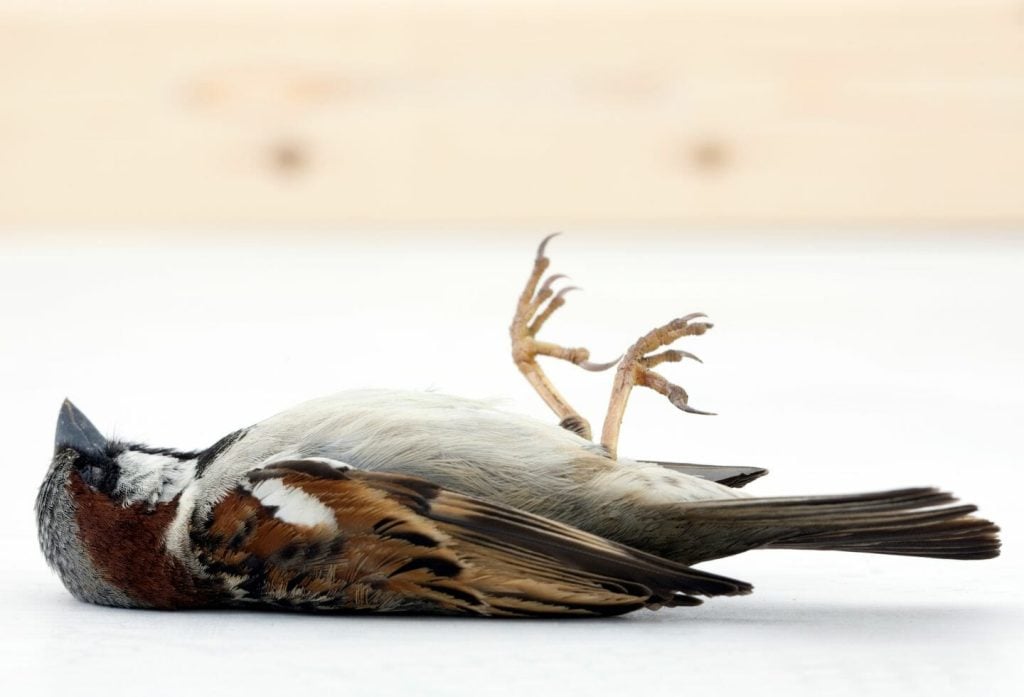
High-tension wire collisions are another major problem because they are not easily detected from afar, especially when the day is cloudy.
Electrocutions of large birds like raptors occur when they make contact between live electrical wires and a pole or ground.
Even though the numbers are very small, this threat is very significant because the birds impacted have low populations.
Eagles and other larger birds often lay fewer eggs and have smaller numbers.
There are many roads in the US, and this is certainly one place where they get killed in large numbers.
One suggestion that has been tried out in some parts of the country is to landscape the roadside, which could help discourage birds from congregating there.
Wind turbines also impact large and scarce birds like raptors.
The wind power industry is discussing efforts to design more bird-friendly turbines and choosing less bird-populated locations.
Poisoning
Pesticides are suspected of killing 72 million or more birds per year.
One of the issues with pesticides is that they also make them more vulnerable to predators and reduce their ability to reproduce.
A study found that common pesticides caused more bird deaths than West Nile Virus.
Oil spills, both large and small, kill hundreds of thousands of birds annually, with several incidents going unreported.
Lead poisoning is a major cause of bird deaths, estimated to kill around 4% of waterfowl each year.
Birds ingest lead from bullets and shot and fishing sinkers, which gets absorbed in their body.
Predation
The number one predator of birds are cats.
Domestic and feral cats may kill over 500 million birds per year. This is not natural predation but rather a human-caused problem.
Cats have been blamed for the extinction of two species of small mammals in the southeastern United States, and feral cats are a major problem on many oceanic islands.
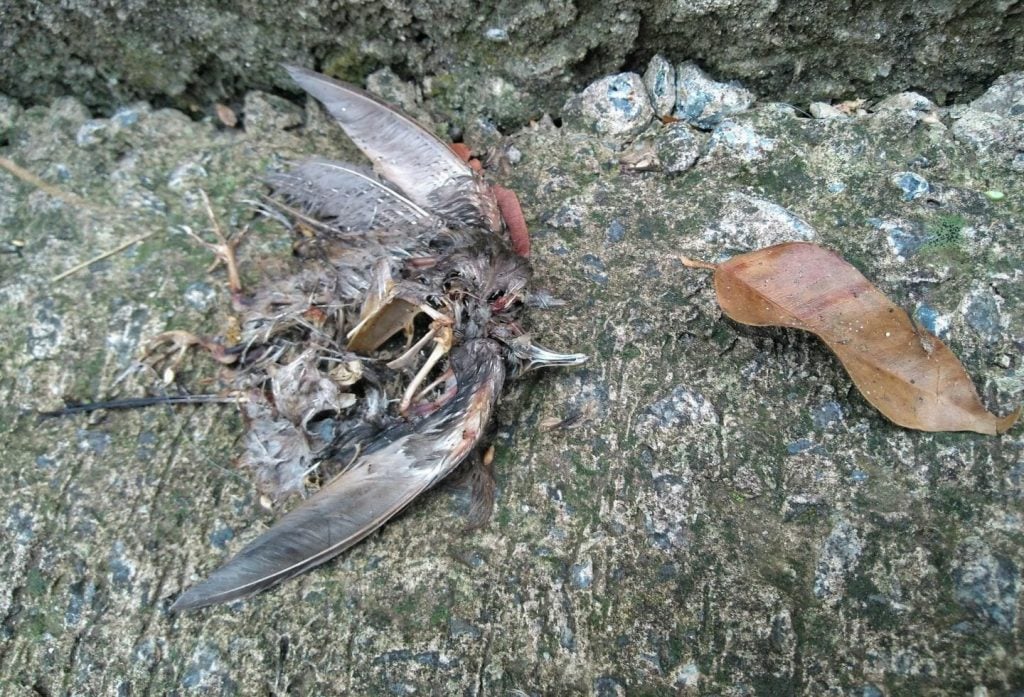
Fishing is another problem area.
Tens to hundreds of thousands of seabirds are caught each year in fishing nets and hooks intended for fish, resulting in a significant impact on certain bird species.
Lastly, the annual waterfowl hunt in North America kills about 15 million birds but is carefully managed and balanced by conservation efforts led by hunters.
Hunting is not a threat to the population of any North American bird and has been beneficial to many species in addition to the ones being hunted.
How Do Birds Die a Natural Death?
There are essentially two reasons for a natural death in any organism – disease and old age.
Disease
Disease is not just a reason for bird mortality. It can also lead to predation as the bird gets weakened.
Avian diseases are often specific, such as conjunctivitis in House Finches or botulism in drying wetlands.
The West Nile Virus has affected a wide range of species, and its spread was very rapid.
Introduced diseases have had a significant impact on Hawaiian bird populations.
Old Age
It is extremely rare for a bird to die of purely old age in the wild.
The reason is that as their body weakens, it is often afflicted by diseases or makes it easier for predators to attack them.
However, in rare cases, birds do die of old age.
And we will discuss this more in the sections that follow.

Do Birds Know When They Are Dying?
Yes, they do become aware of approaching death when it is due to natural causes.
Birds often find a hole in the ground or a quiet place among dense shrubbery or tree branches when they realize that they are about to die.
It is an instinct to keep themselves safe from predators as their body weakens.
Pet birds will show signs like becoming lethargic, very quiet, shivering, becoming cold, and so on.
Where Do Birds Go To Die?
Part of the answer is already spoken for in the previous section – birds prefer to find a place they recognize when they realize they are about to die.
Ground nesting birds love to find a hole in the ground, under a building, or maybe in a drain somewhere.
Those that have nests in the trees might prefer to die in their nests or at least find som tree cavity where they can rest without fear of being eaten.
Others might look for shrubbery or dense vegetation to hide in. But unfortunately, most of the time, none of this works.
In the next section, we will see why.
Why Do You Never See Dead Birds?
So we have established by now how birds die, both of natural and accidental causes.
And if they are fortunate, they might die in peace in a hiding place of their choosing.
But that still leaves us with the question – where do they disappear, and why do we not see dead birds more often?
Predators Finish off Everything
Predators such as cats, foxes, rodents, and other mammals quickly discover the hiding places we mentioned earlier.
What follows is the gruesome dance of nature.
Sometimes, you might find a pile of feathers in the ground – that’s essentially a predator who has had his fill of bird meat and left the feathers there.
Typically, even those feathers get reused by other birds for their nests.
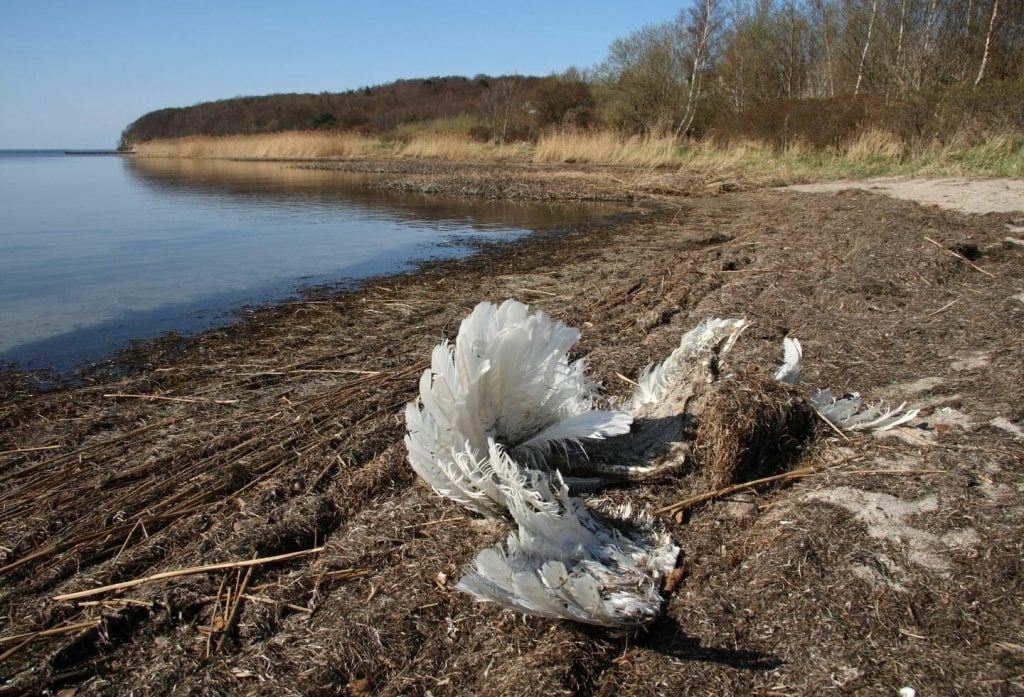
Scavengers Polish Off The Rest
Even if the bird dies in peace, scavengers have a way of not letting a good dead body go to waste.
The most common and lethal scavengers are insects and bacteria – they can quickly and efficiently tear apart a bird in no time.
Others of the bird family, like vultures and crows, also partake in the feast.
These scavengers can eat everything – from the feathers to the skin and even the bones. Nothing is left to see for humans.
Decomposition
If, by some chance, neither predators nor scavengers reach a fallen bird – nature still has a backup to clean things up.
You see, birds are essentially blobs of floating air.
Everything in their bodies – from their famously hollow bones to their fat-free organs, light skin, and feathers gets decomposed easily.
You will be surprised to know that a small bird would be gone in just about a day, whereas a larger one, like a raptor, may last for a week or so, but not much more than that.
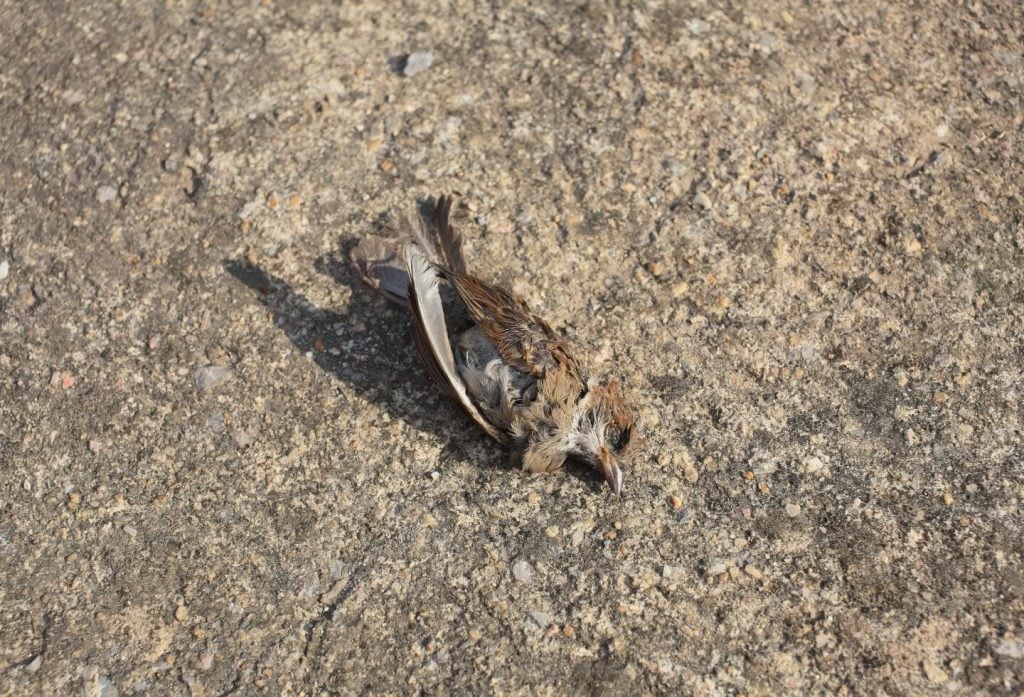
What Should You Do If You See A Dying Bird?
Trying to care for a wild bird is actually not a very good idea. Your first instinct should be to call a wildlife rehabilitator in such situations.
However, if you know that they might not be able to do anything in time, you can place the bird in a cardboard box and cover it with a towel.
Birds go into shock very quickly when they are injured, so try not to move it around too much.
Every few minutes, remove the towel and check if the bird is capable of flying away on its own.
If it doesn’t work, there is nothing much that you can do, unfortunately – call a wildlife rehabilitator and hope for the best.
It is important to remember not to try and force feed the bird or give it water – that can be very dangerous for the bird.
Frequently Asked Questions
What happens if you touch a dead bird?
If you want to lift a dead bird, it is best to use gloves and protect your hands. Wash your hands thoroughly with soap afterward.
Lastly, if you get symptoms like that of the flu, it might very well be a case of a disease having been transmitted. It would be best to reach out to a doctor and get the proper medication.
Do birds eat dead birds?
They are known to eat dead birds as well.
However, not all birds are scavengers, and some birds may not eat dead animals at all. In fact, many of them are not carnivorous at all.
Do birds fall to their death?
Thankfully, most birds prefer to find a quiet corner to die in when they realize that they might die.
Typically, they find a hole in the ground, some dense shrubbery or perhaps a cavity in a nearby tree, where they can hide from predators and live out the remaining few days.
Do birds get scared to death?
However, birds can experience stress and anxiety, which can have negative impacts on their health and well-being.
Loud noises, sudden movements, and other stressful stimuli can cause birds to become agitated and anxious, which can lead to physical symptoms such as rapid breathing and increased heart rate.
In extreme cases, prolonged stress and anxiety can weaken a bird’s immune system, making it more susceptible to disease and other health problems.
While it is unlikely that a bird would die from fear alone, it is important to treat birds with care and respect in order to ensure their health and well-being.
Wrap Up
I hope I was able to answer your questions. Birds die in hordes, but they are so small they often get eaten or scavenged.
Moreover, most of them are so tiny and lightweight that their bodies get decompose very quickly.
Nature has found a way to even reuse the feathers – other birds will simply use them to line their nests.
All in all, dead birds are all around us, but few of them stay around long enough for us to see them.
Thank you for reading.


